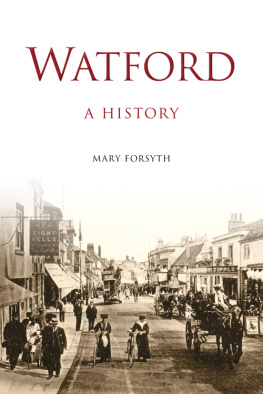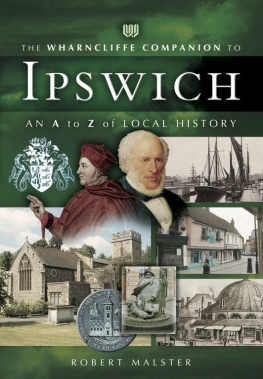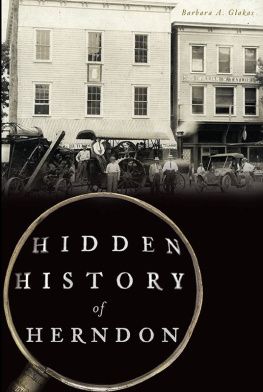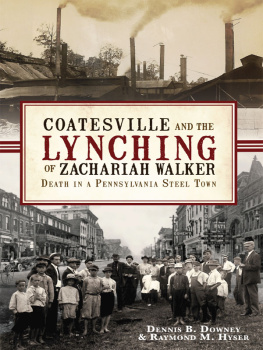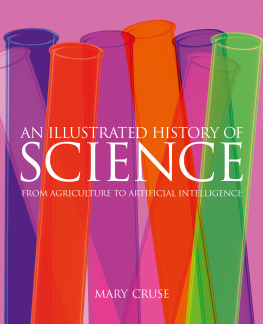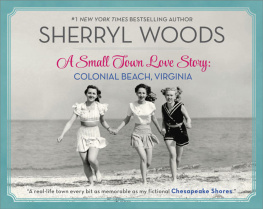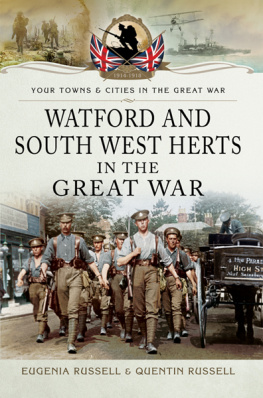

T his book could not have been completed if I had not had the help of friends. My knowledge, particularly of eighteenth-century Watford, has been supplemented by information generously provided by Gordon Cox, a fellow researcher. The map was drawn by another friend, Laurie Elvin. I also owe a deep debt of gratitude to my colleagues at Watford Museum, among whom are the manager, Sarah Priestley, who has supported me throughout, Sue Carter who has typed the whole of my handwritten script, and Christine Orchard who scanned all the images for me and who also created some of the line drawings which head the chapters. The illustrations come either from the museums collection or from my own. The following are from the museum: 16, 9, 13, 14, 16, 17, 19, 23, 2629, 31, 32, 3437, 3956. Of these 16, 17, 19, 23, 2629, 31, 41, 46, 47, 56 were taken by local photographer, Bob Nunn, whose widow gave them to the museum. The rest are my own.

Original drawing by Laurie Elvin Contains Ordnance Survey data Crown Copyright and database right [2015]
C ONTENTS
1. Bronze Age axe-heads.
2. Anglo-Saxon pennies.
3. Anglo-Saxon pennies.
4. Seventeenth-century trade token.
5. Seventeenth-century trade token
6. St Marys church, 1855.
7. St Marys church, early 1900s.
8. Lower High Street, early 1900s.
9. Lower High Street, early 1900s.
10. High Street, at King Street and Queens Road crossing, early 1900s.
11. High Street, south of the marketplace, before 1912.
12. Marketplace, early 1900s.
13. Marketplace, 1920s.
14. Marketplace, 1920s.
15. Marketplace, 1961.
16. Marketplace, with entry to Charter Place, 1986.
17. Charter Place.
18. High Street, looking to Clarendon Road, early 1930s.
19. High Street, corner of Clarendon Road.
20. The Parade, early 1900s.
21. The Parade, 1950s.
22. The Pond, early 1900s.
23. The Pond, 1960.
24. The Roundabout, 1930s.
25. The Roundabout, 1950s.
26. King Street, post-Second World War.
27. Queens Road, 1960s.
28. Clarendon Road, 1950.
29. Clarendon Road, 1949.
30. St Albans Road.
31. St Albans Road.
32. Bedford Almshouses, 1988.
33. Jacksons, 1961.
34. Monmouth House, before 1927.
35. Little Cassiobury, 1922.
36. Frogmore House.
37. Benskins, 194 High Street.
38. Free School.
39. Watford Place.
40. One Crown public house, 1966.
41. One Bell public house.
42. Benskins Brewery.
43. Wells Brewery, 1966.
44. Ballards Buildings, early 1920s.
45. Harebreaks housing estate, 1920s
46. Clifford Street, 1983.
47. Estcourt conservation area.
48. Cassiobury House, front, 1922.
49. Cassiobury House, garden and elevation.
50. Watford Junction station, late nineteenth century.
51. Five Arches Railway Bridge.
52. High Street in the First World War.
53. First World War munitions workers.
54. Second World War: fitting gas masks.
55. Second World War: VI rocket damage, 1944.
56. View of Watford in the 1970s.
B ooks have been written before about Watford, several of them, yet there is not available to the general reader a recent straightforward history of the town and its people.
This book seeks to provide that. It aims to remind long-term residents of the past which they have experienced, to show newcomers how the town has developed in the way that it has, and to provide a basis upon which future research can be developed.
All researchers draw on the work of their predecessors. And so it is that, in the search for Watfords past, one needs to consider what others have written.
Amongst the earlier books are the histories of the whole County of Hertfordshire. Here Watford is mentioned only briefly, as just one among many market towns and not one of particular significance when compared, for example, with St Albans or Hertford, both of which have been boroughs much longer than Watford.
These early historians wrote of a county of woods and agriculture. They referred to its soil, to the underlying geology of the land, and to its rivers, but for the rest they were more interested in its antiquities and in the pedigrees of the gentry who lived in it and for whom they were writing.
The first of these early historians was Sir Henry Chauncy with his Historical Antiquities of Hertfordshire , published in 1700, towards the end of the reign of William III. On his title page he told his readers that he would be describing, amongst other features, the several Honors, Mannors, Castles, Seats and Parks of the Nobility and Gentry and it was to these men, whether of the old established county families or the newcomers who were buying estates in the area, that he addressed himself.
In 1728, in the time of George II, Nathaniel Salmon published his History of Hertfordshire , in which he was, as he stated on his title page, Describing the County and its Antient Monuments Particularly Roman with the Character of Those that have been the chief possessors of the Lands. Like Chauncy, he dedicated his book to a member of the aristocracy, in his case the Earl of Hertford, and he listed the subscribers to his book, which included many of those chief possessors of the Lands.
Salmon drew on Chauncys research, both that published in the Historical Antiquities of Hertfordshire and some unpublished material that he acquired. Thus began a process, described by Stephen Doree in Hertfordshire in History , whereby historians transferred the dead bones of the past from one grave to another: from the original depositories to their own notebooks.
The next county historian was born and died in Watford. Robert Clutterbuck published the first volume of his History and Antiquities of the County of Hertford in 1815 and followed this with two more volumes in 1821 and 1827. A Fellow of the Society of Antiquaries, a local magistrate and trustee to several charities, his description of Watford appeared in his first volume; despite his association with the town, he did not give it any particular prominence.
Later in the century the last of the antiquarian county histories was published by J.E. Cussans; it was another multi-volume publication, with that containing Watford appearing in 1881. Cussans described it as An Account of the descents of the various manors, Pedigrees of Families connected with the County; Antiquities, Local Customs, etc., etc.
It was not until the twentieth century, with the publication of the Victoria County History of Hertfordshire , that a book appeared which both provided a substantial body of information about Watford and also showed where this information came from. The volume containing Watford was published in 1908; it included detail which had not previously been available in this format, though it too was particularly concerned with the history of various manors within the parish of Watford.
By this time, however, the first History of Watford had been published, in 1884, by another Watford resident, Henry Williams. Like Robert Clutterbuck, he was involved in town affairs, though at a different level. Born to a Watford family, he lived all his life in the town. He began as a photographer before turning to journalism, serving for a while as the local reporter for the Buckingham Advertiser. Later he worked for the local authority, at that time the Local Board of Health, first as a Water Inspector and later also as the Inspector of Nuisances, finishing his career as a Sanitary Inspector.
Next page
